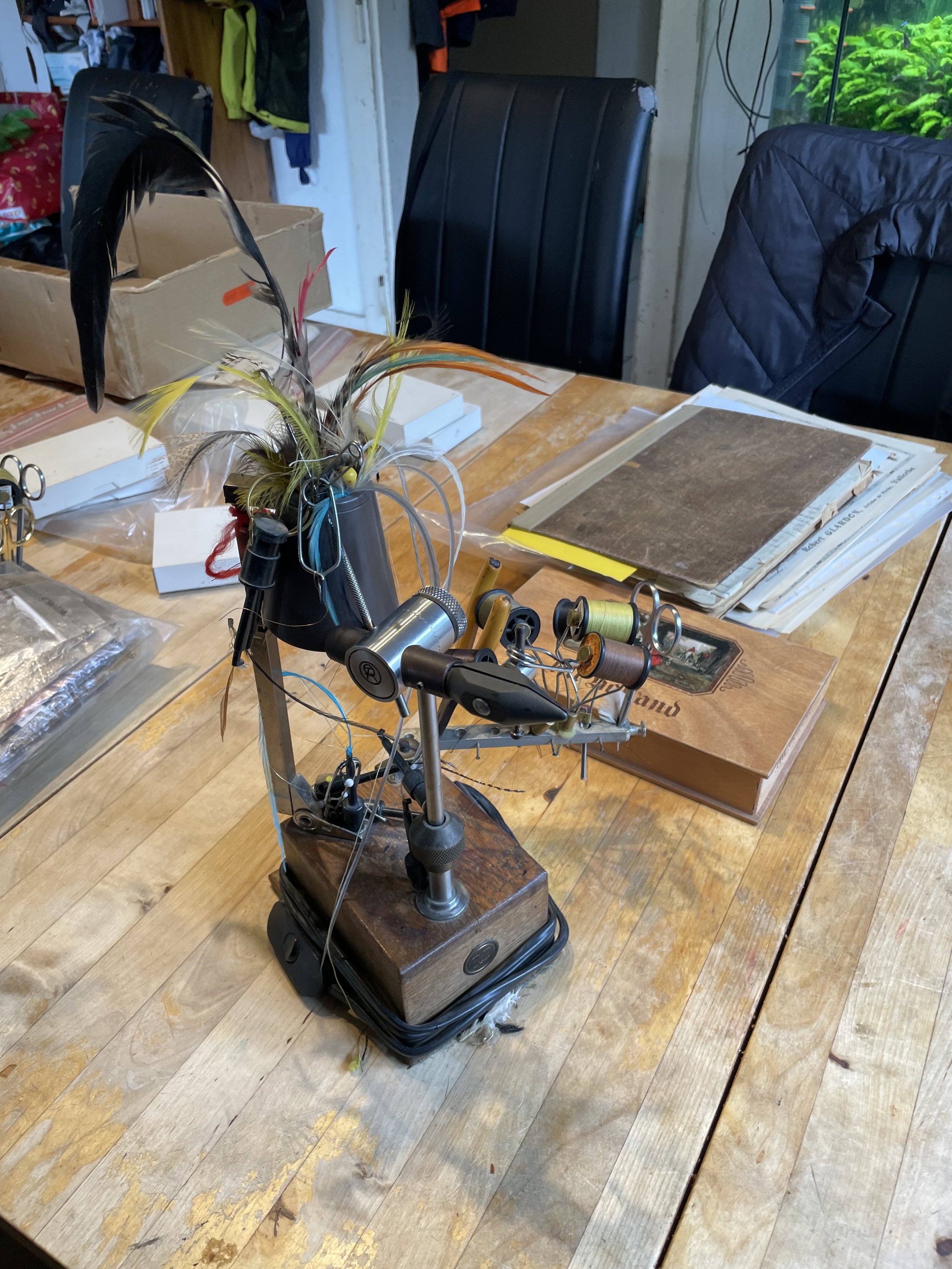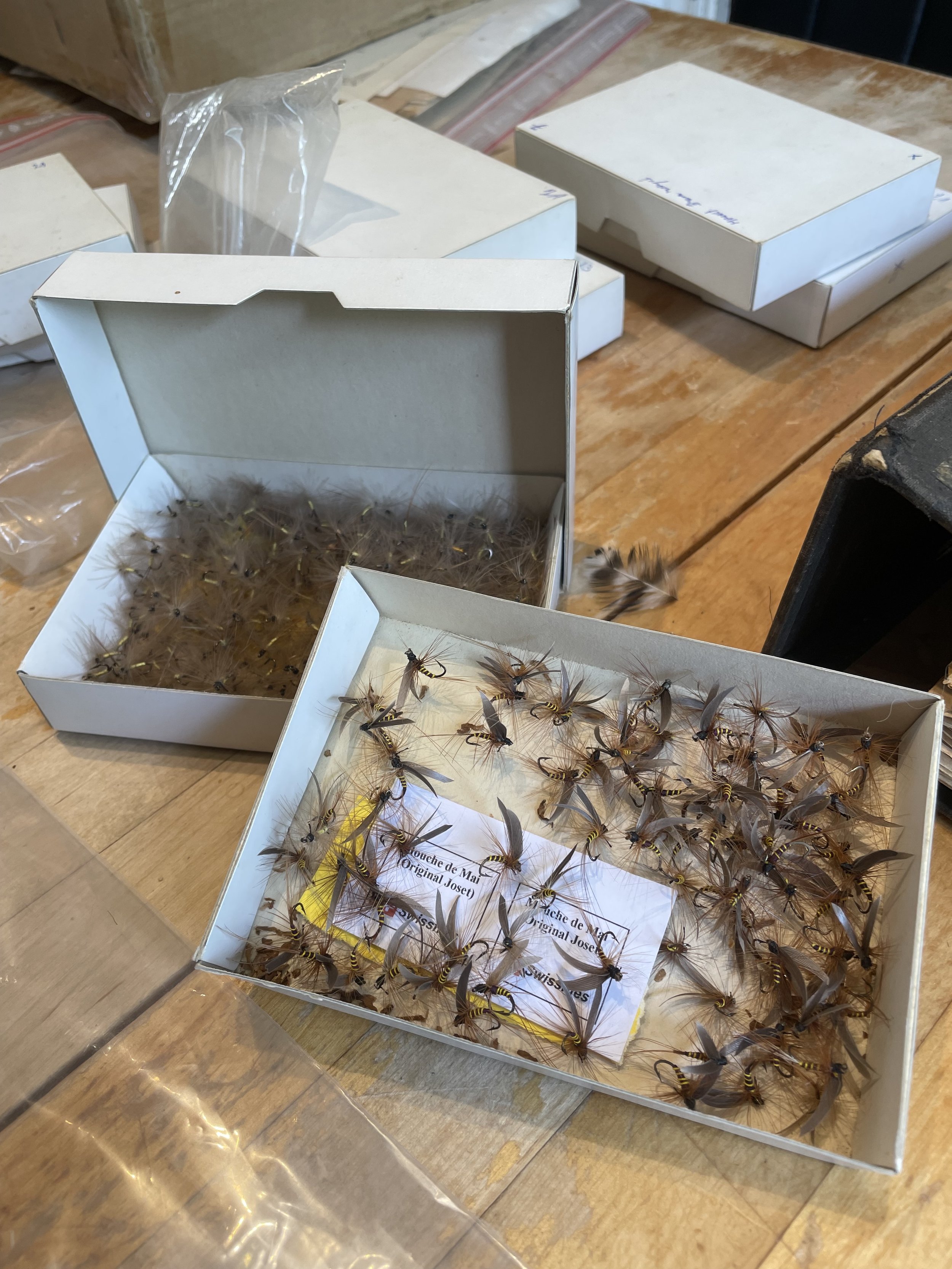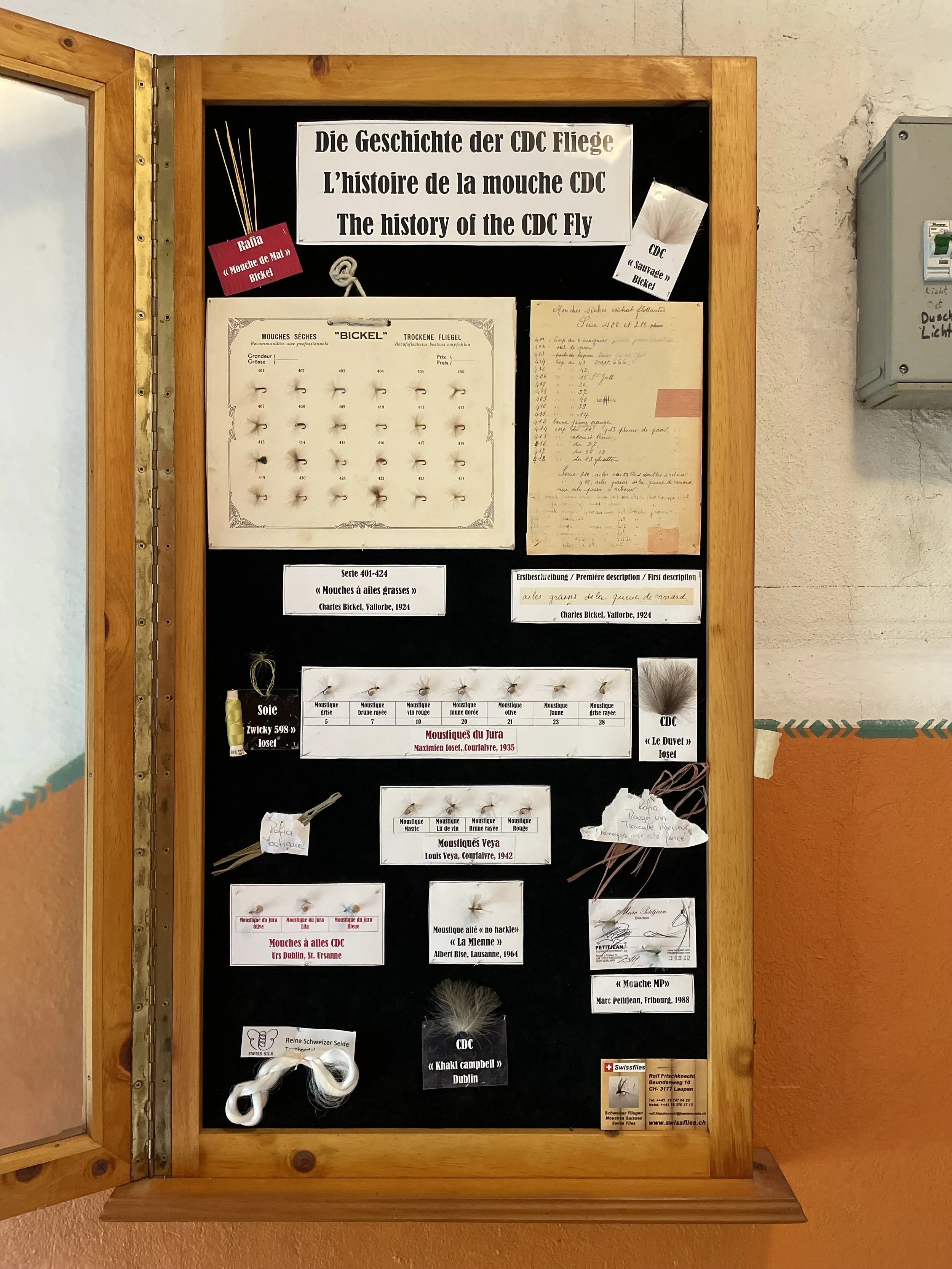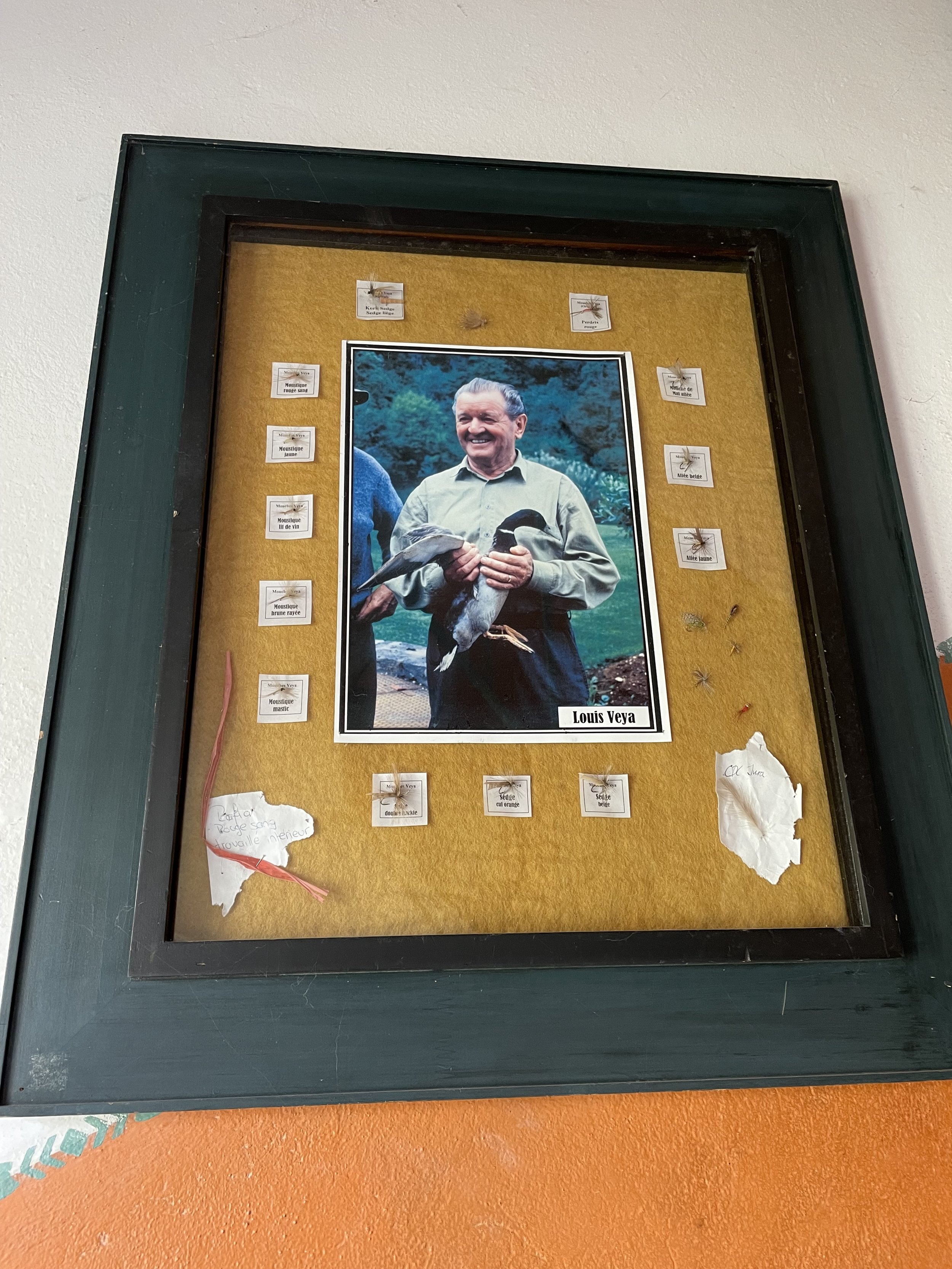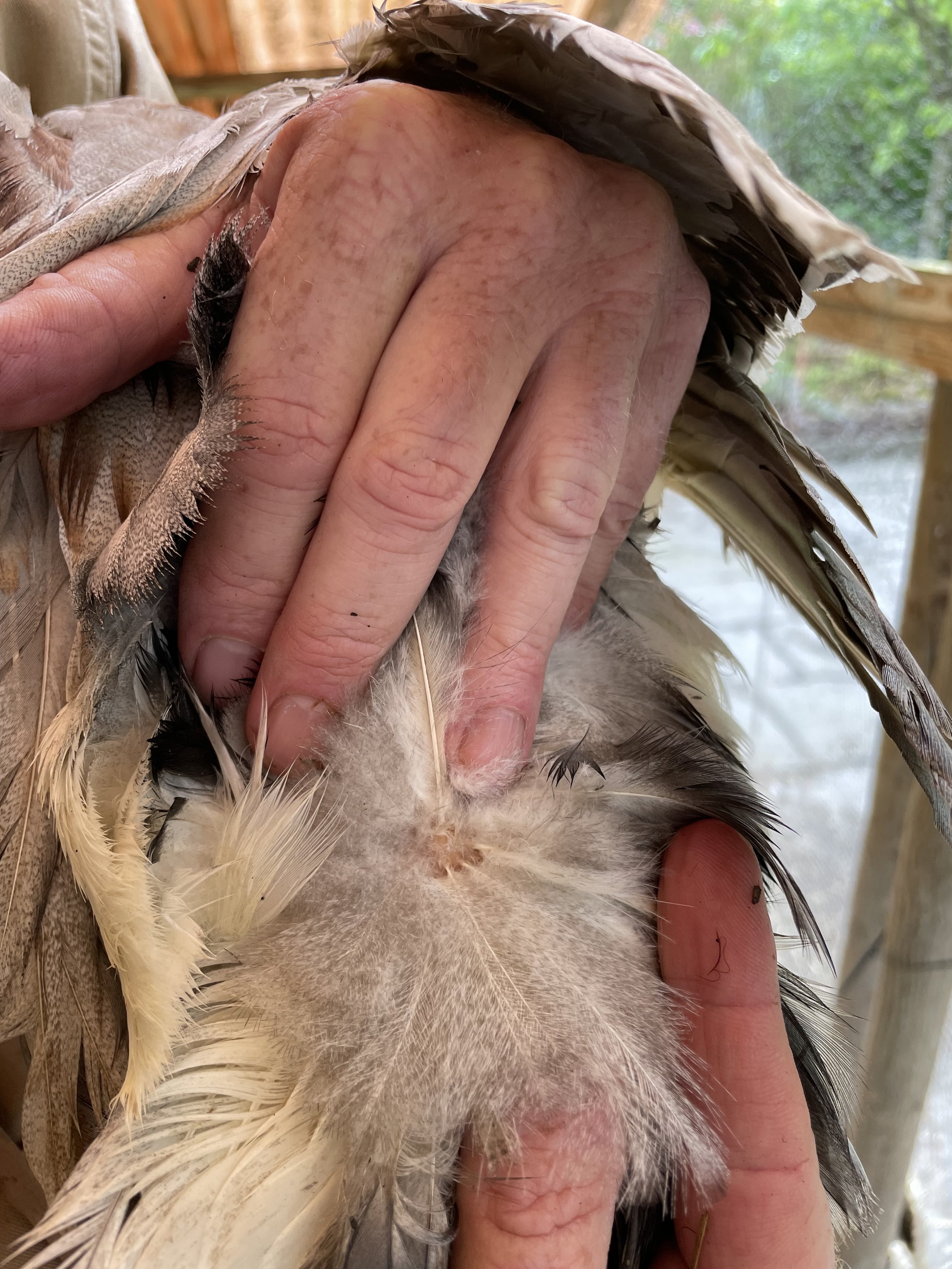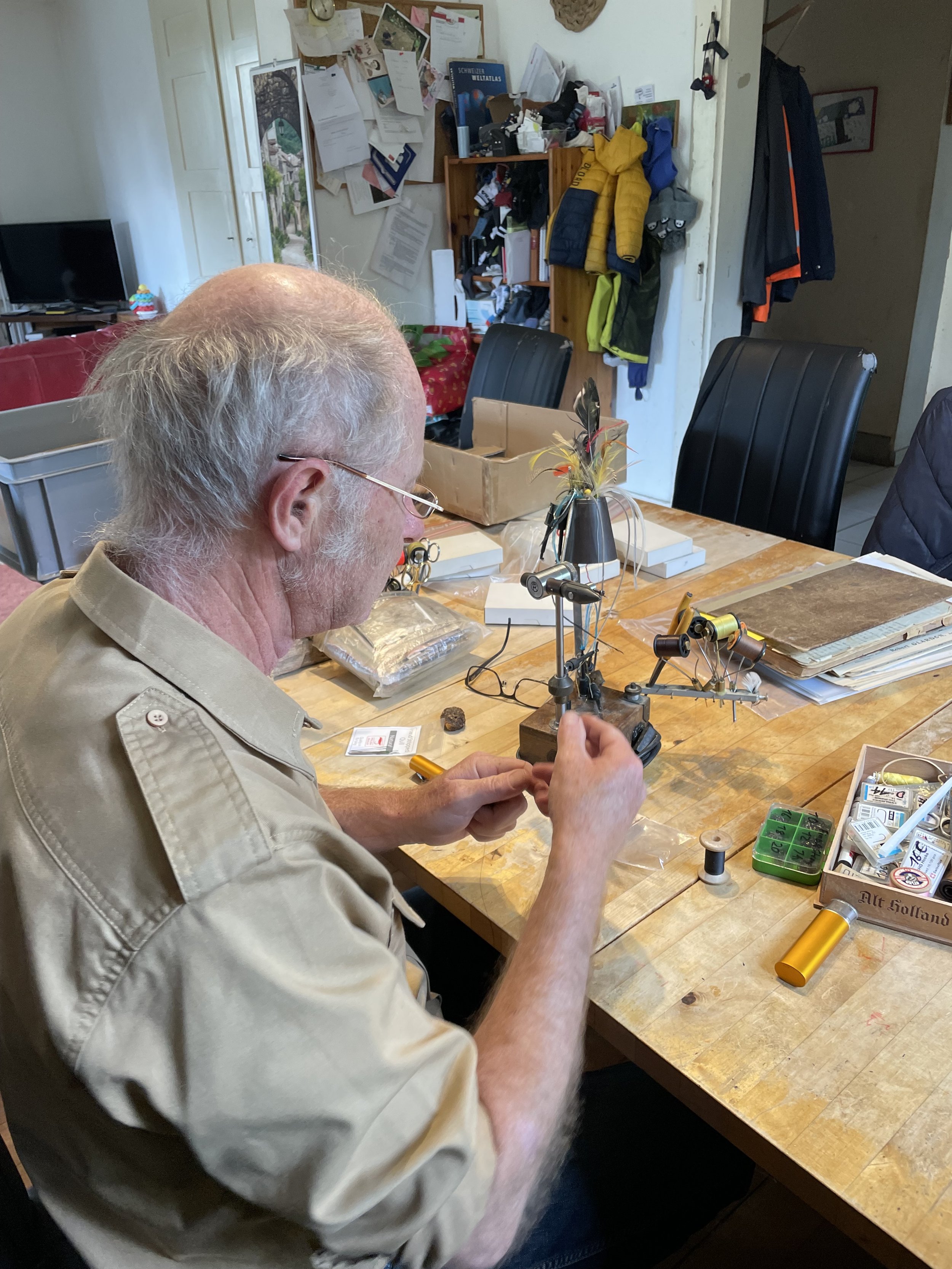
Rolf Frischknecht
1. Choice of equipment Rods, reels, fly lines, fly floatants, clothes, glasses and other useful items.
I own many different rods, but prefer my self- made split cane rods, 3- to 5-weight around 7 to 8-feet long with Hardy reels. I use Phoenix silk lines, because such a line becomes even better when getting older. They are made as DT- that helps a lot in making a diligent presentation and allows mending the line if necessary. As floatant I prefer my self- made grease and Mucilin.
Polarized sunglasses are helpful on sunny days, but nonsense in the evening because they reduce light.
Most important for me is to have as little equipment as possible. I never wear fishing vests, have only a small neck box with the flies for the day and a small bag with spare leaders, licence, small pliers and of course as a smoker some cigarettes and a lighter.
But to say it clearly: it’s not the gear that catches fish- it is the fisherman. To be at the right time at the good place, stealth, river reading, soft and accurate casts, good fly choice and, most important, the abundance of fish makes the success.
So, invest better in river restoration projects and political work to save the fish, than in expensive gear.
2. Leader material, build up, length and knots.
I use Maxima leaders, for many years self-knotted, but now also tapered, 12 feet. I add in slower rivers up to 1.5 m of soft nylon tippet. Tippet is usually 0.16, late evenings and night 0.20.
3. Approach and stealth.
The most common error in beginners is to see a fish rising and immediately wading in and casting. Like this, they chase often the better fish which are in waiting position. It is better to sit down for a moment and watch- then decide on how to approach which fish.
Avoid wading, if you can.
If wading becomes necessary, I always try to get as near as possible behind the fish. But that means wading slowly, do not produce waves.
4. Reading the water.
After more than 50 years of fly fishing I know in all my often fished waters where the fish are. In trout it is there, where the water flow brings a lot of food- and near to their hiding place (big stones, underwashed banks, bushes and tree roots).
When fishing late or in the night, they can be everywhere. I even got once a big trout one foot beside my waders.
Doubs la Charbonnière
The Doubs- typical Swiss chalk stream
5. Casting ability which casts are essential.
I have never been a good long distance caster. But just that forced me to think about the best stealth way to approach the fish without disturbing. I use 90% side casts and 10% roll casts.
6. Entomology, what should we know.
Important is not to know the names, but to know the season and time of the day when you can expect which fly.
7. Rise forms Can they tell us something?
Of course. Most important is distinguish small fish from the big ones. Small ones often take the fly noisily and splash in the process- avoid casting for them, because if hooked they will disturb the pool.
All the big fish I ever had were rising slowly and quiet. An exception is when they go for the big stoneflies and sedges fluttering over the water.
Typical are also some midge hatches were the fish stand just beneath the surface and you see the dorsal fin.
8. Fly selection, size, shape, materials, which flies are essential, favourite fly.
I prefer dry flies, very seldom I fish the nymph and streamers only by exception (high water).
As a historic fly collector I fish in the difficult chalk streams remakes of the locally developed old patterns (Bickel, Ioset or Veya CDC, cork sedge) or also CDC parachutes.
When fishing mountain creeks, the choice of fly is not important, as long as it is big enough and swims well. All that counts there is just the approach.
As said, I prepare always a small flybox for the day- containing some dry flies and emergers and a few wet flies and nymphs. The choice of patterns is always adapted to the season and the river type.
When tying my flies, I prefer natural materials like silk, rafia, cork, hackles from backyard cocks, and CDC of my own ducks.
The Bickel CDC 401- most probably the first CDC fly ever made.
Read more: https://swissflies.ch/mouches_bickel_cdc401-424_1924.php?l=en
9. Presentation and drifts.
A presentation must be as soft as possible- and the longer the drift, the better it is. Best is a presentation where the leader lands curved, fly downstream. Long leaders and side casts help in achieving this goal.
10. Upstream or downstream?
I always fish upstream. Downstream only for grayling or the wet fly.
11. fighting fish.
Fighting has to be as short as possible. That saves the fish’s live, especially when water temperatures are high. Apart of using leaders as strong as possible, I walk downstream with hooked fish- like that it is easy to get them in short time in the net.
What I have to add:
During my 50 years of fly fishing, I have witnessed a dramatic decline in Swiss fish stocks. There are many reasons for this, including river engineering, pesticides, introduced fish diseases and climate change.
In addition, Swiss fishing legislation has made little progress and still allows far too much harvesting and fishing with natural bait, which puts even more pressure on already weak stocks.
In my view, simply fishing abroad is not the solution. Instead, we should all put our energy into protecting our local waters.
This can be done by supporting local improvement measures, i.e. projects such as the construction of fish shelters, renaturalisation, etc., or through political commitment to influence legislation.
The decline in fish stocks and fishing will also be accompanied by the loss of a centuries-old history of fly fishing in Switzerland.
In order to save at least a part of it, I have started to systematically collect the historical Swiss fly patterns and make them accessible to the public.
Further information from readers on this topic is always welcome.
Read more: https://swissflies.ch/originale_mouchesdevallorbe.php
